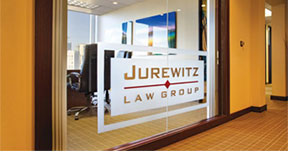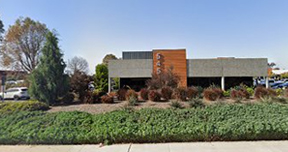 You can never be too careful when it comes to your auto insurance policy. It’s easy to get lost in the numbers and fine print, but those numbers are going to mean something the second you get into a collision. Do yourself a favor and go over your policy with a fine-toothed comb this New Year’s.
You can never be too careful when it comes to your auto insurance policy. It’s easy to get lost in the numbers and fine print, but those numbers are going to mean something the second you get into a collision. Do yourself a favor and go over your policy with a fine-toothed comb this New Year’s.
As a San Diego personal injury law firm, Jurewitz Law Group Injury & Accident Lawyers has firsthand experience dealing with insurance companies. We understand the tactics they employ to keep their expenses as low as possible, and what that means for their customers. Too many insurance companies put their bottom line before the welfare of victims, and we don’t believe that’s right.
Unfortunately, once you’ve been involved in a crash, it may be too late. That’s why we advise you to pay very close attention to your policy and make sure you are protected. Here are some tips on how to find out if you have the insurance you need, so when an accident does happen, you’ll get the compensation you deserve.
1. It pays to shop around.
Most people don’t like to think too much about their insurance. You are paying for peace of mind, after all. What that often means, practically speaking, is once someone has an insurance company, they tend to stick with it for the long haul.
Unfortunately, this kind of brand loyalty may actually be costing you money. Insurance companies know people will stick with them once they have signed on, so they concentrate their best deals on new customers. In addition, you may now qualify for age-specific discounts that didn’t apply when you first signed up, and you can bet your provider isn’t going to share your eligibility for these discounts if you don’t ask. The same goes for drivers with a clean driving record.
That’s why you should compare rates every year before blindly agreeing to another year of coverage. An easy place to start is online, where you can compare what you are paying right now with what you would have to pay if you switch to a new provider. Often, just calling your insurance agent and letting them know you are thinking of switching is enough to get you a lower rate.
2. Sometimes, the problems go deeper than high rates.
It’s bad enough when an insurance company fails to fulfill its promises. But when a company engages in outright fraud, it’s time to fight back.
Wells Fargo provides a stark example of what can happen when you don’t read the fine print. Though the company is a bank rather than an insurance provider, they did have an auto insurance program for customers who financed a car purchase through their company.
A class action lawsuit was recently filed by twelve Wells Fargo customers over this auto insurance program. According to the filing, these borrowers were charged for insurance after obtaining a car loan through the bank. The only problem? The bank never informed them that they were being enrolled in the insurance!
The bank has admitted that as many as 570,000 auto loan borrowers were charged for car insurance without their knowledge. At least 20,000 of these customers ended up defaulting on their car loans because of the hidden insurance fees. Keep an eye on the news, and a closer eye on your policy’s fine print. If you need help, ask a lawyer to review it and explain what the terms mean. We’ll do it if you give us a call.
3. Watch out for underinsured motorist coverage.
Underinsured motorist policies pay out when you are involved in an accident that was someone else’s fault, but the at-fault driver does not have adequate insurance to cover you. For many drivers, UIM provides protection in what might otherwise be a dire situation. In California, minimum insurance requirements are quite low. Certainly not adequate following a catastrophic injury, where hospital bills can add up to hundreds of thousands of dollars or more. In theory, if the motorist who caused your accident doesn’t have enough insurance, the difference will come out of their personal assets, but the reality is that you’ll likely never recover any money because they don’t have money to begin with.
That’s where underinsured motorist coverage is supposed to come in. But again, you’ll need to read the fine print before you sign. Most policies will only pay out the difference in the policy amount versus the other driver’s coverage. For instance, if you purchase a policy for $50,000, and the driver who hit you is covered for $30,000, you’d expect that you would receive $80,000 towards your medical expenses, right?
Wrong. These policies state, and California law confirms, that they only need to pay the amount necessary to add up to the policy total when combined with the underinsured motorist’s coverage. So in the above example, you would only get $50,000 total—$30,000 from the other driver, and $20,000 from your policy. While that may not sound fair, it’s unfortunately legal.
These are just a few of the problems that San Diego residents need to worry about when it comes to insurance. If you have questions about your policies, or have had an accident and are dealing with an insurance company that isn’t living up to its obligations, contact our car accident lawyers today at (888) 233-5020 to learn more in a free consultation.


